This Portuguese sweet bread recipe was traditionally baked for Easter celebrations at my house. It’s sweet and perfect fresh out of the oven with a pat of butter. Turns out, this deliciousness doesn’t have to be reserved for just holidays!
Slather it with some butter and lilikoi jelly!
Mom’s Portuguese sweet bread recipe
Growing up with a Portuguese mother meant that besides anticipating colorful Easter eggs and chocolate bunnies, our holiday prep included a day of whipping up her Portuguese sweet bread recipe. Mom would twist the dough into braids and tuck eggs between the folds, just like her mom did.
From the fragrance of the proofing yeast to the dough rising and then baking into golden brown loaves of Easter bread, this family tradition – above all others – is my favorite. Nothing compares to a slice of sweet bread, still warm from the oven and topped by a pat of real butter.
Kneading the Portuguese sweet bread
Kneading is a method of repeatedly folding and stretching dough until it’s smooth. The old-school way to knead bread, of course, is by hand. Turn the sweet bread dough out onto a floured surface and sprinkle more flour onto the dough. This prevents the dough from sticking to your hands.
5 Easy Steps to Transform Your Pantry!
Ready to switch from store bought to homemade? Let me help you make some changes! Grab my FREE five-part guide to getting started.
Use the heel of your hand to push the dough, making an indentation in its center. As you push, use your fingers to lift and pull the dough toward you, placing it back over the dough. Repeat with the opposite hand. Lift and turn the dough, adding more flour as necessary to prevent sticking. (Use just enough added flour to prevent sticking; too much will dry out the dough.)
It’ll take about 15 minutes. You know you’re done when the surface of the dough feels smooth and not sticky. If you look closely, you might be able to see tiny air bubbles starting to form under the surface.
Modern day bread making allows us the use of a stand mixer equipped with a dough hook to do the kneading.
The rising process
Making bread is not difficult. It does take time, though. The cool thing is that most of that time is hands-off. You can go do something else while the yeast is doing its work. Once you’ve kneaded the dough, you’ll set it aside to rise for a couple of hours until it has doubled in bulk. Punch the dough down by pressing your hand into the soft dough; the dough will deflate.
Now you’re ready to form the dough into loaves and allow it to rise again for another hour.
Forming the sweet bread dough
This Portuguese sweet bread bread recipe can be formed into a simple loaf, a braided loaf, or rolls. No matter how you choose to form it, start by dividing the dough in half after the first rise.
For a round loaf:
Form each half of the dough into a ball, working to put the “loose” ends on the bottom so that the top is nice and smooth. Place each dough on a cookie sheet and set aside to rise.
How to make a braided loaf of bread:
Divide each half of the bread dough into three equal pieces. Roll each into a rope, about 1-2 inches in diameter. Press the ends of the ropes together and braid. When you reach the end, tuck ends under slightly and place bread on a cookie sheet for the second rise.
To make sweet bread rolls:
Form each half of the dough into a log. Cut the log into (roughly) two inch lengths. Roll each small portion into balls and put in a pie pan. Allow to rise, then bake until nice and brown.
★ Did you make my mom’s authentic Portuguese sweet bread recipe? Don’t forget to give it a star rating below!
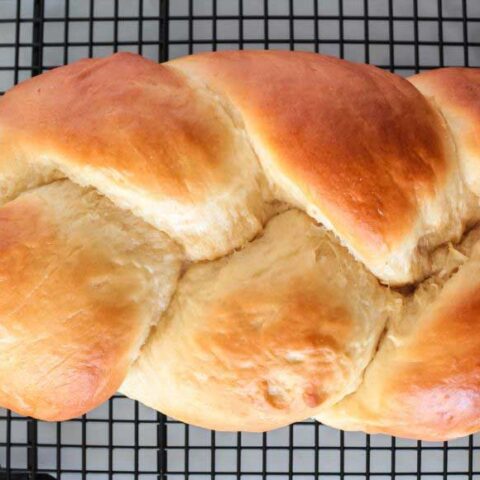
Grandma's Portuguese Sweet Bread Recipe
From the fragrance of the proofing yeast to the dough rising and then baking into golden brown loaves, this family tradition – above all others – is my favorite. Nothing compares to a slice of sweet bread, still warm from the oven and topped by a pat of real butter.
Ingredients
- 4 1/2 teaspoon active dry yeast
- 1/4 cup warm water
- 1 cup granulated organic cane sugar
- 1 cup milk, scalded and still hot
- 1/4 cup butter
- 1 teaspoon sea salt
- 3 large eggs, lightly beaten
- 6 to 7 cups unbleached organic all-purpose flour
Instructions
- Dissolve yeast in warm water. Mix sugar, hot milk, butter, and salt together in a large bowl, stirring until butter melts. When cooled to lukewarm, beat in eggs and yeast mixture. Gradually beat 5 cups of flour into liquid to make a smooth dough.
- If you have a stand mixer that will handle this amount of dough, you can use that to shorten the process. Simply complete above steps in your mixer bowl and let your dough hook do the kneading for you.
- To knead by hand, heavily flour a board with a portion of the remaining flour. Turn dough out onto board and sprinkle with remaining flour. Knead until very smooth, adding flour to eliminate stickiness as necessary. You should see small "blisters" of air on the surface of the dough. This takes about 15-20 minutes. Consider it your workout for the day.
- Place dough in a large buttered bowl. Cover loosely with a towel and put in a warm place until doubled in size (about two hours).
- Punch down dough (it will collapse). Using buttered hands, form dough into desired loaves. You can divide dough into two large loaves or try them as smaller rolls. Or you can try the pie pan method you see used by the historical society.
- Place your formed loaves on a buttered cookie sheet or in a buttered pie pan. Cover loaves and set in a warm place to rise again for about an hour. Bake at 350 degrees for 25-30 minutes or until golden brown. Baking time will vary a bit depending upon loaf size.
- Optional: Use a pastry brush to baste milk over the loaves just as they start to brown. This will give them a beautiful shiny glow.
To make Portuguese sweet bread rolls:
- Turn dough onto floured surface. Divide dough in two. Form each half loosely into a two-inch log. Cut log into two-inch lengths.
- Roll dough into balls. Place onto a buttered cookie sheet or in a buttered pie pan, not quite touching.
- Cover rolls and set in a warm place to rise again for about an hour.
- Bake at 350 degrees Fahrenheit for 20-25 minutes or until golden brown.
How to make a round loaf
- Form each half of the dough into a ball, working to put the "loose" ends on the bottom so that the top is nice and smooth. Place each dough on a cookie sheet and set aside to rise.
How to make a braided loaf of bread
- Divide each half of the bread dough into three equal pieces.
- Roll each into a rope, about 1-2 inches in diameter.
- Press the ends of the ropes together and braid. When you reach the end, tuck ends under slightly and place bread on a cookie sheet for the second rise.
Nutrition Information:
Yield: 20 Serving Size: 1 gramsAmount Per Serving: Calories: 80Total Fat: 3gSaturated Fat: 1gUnsaturated Fat: 0gCholesterol: 35mgSodium: 132mgCarbohydrates: 11gSugar: 10gProtein: 1g
More yeast bread recipes to try:
Portuguese sweet bread in Hawaii
When I moved to Hawai‘i, I noticed plenty of differences in the selection at the grocery store. What surprised me more than anything was the sheer abundance of Portuguese sweet bread. It was available everywhere, every day. No longer would I have to wait for the once-a-year baking and kneading session to savor this slice of my childhood.
While the island style bread is a bit airier than those made with my favorite recipe, having access to Portuguese sweet bread on a daily basis certainly makes up for whatever minor shortfall I perceive in the finished product.
Related: Baking Bread from Scratch – What You Need to Know
History in the [baking]
So just why is there such a preponderance of Portuguese sweet bread here in Hawai‘i? The answer lies in the Portuguese immigrants who came to the islands to work the sugar cane fields in the 1800s. They brought this traditional bread recipe with them. It eventually became as familiar as the sticky rice and poi that are staple foods for island residents.
Those Portuguese immigrants also brought along the old world style of baking in a wood-fired stone oven called a forno. While most of the bread you’ll find in Hawaii is baked in a more modern manner, there is one place that you can still savor sweet bread that’s been baked in the traditional way.
Related: Homemade Light and Fluffy Dinner Rolls
The Kona Historical Society has created a replica of a traditional forno in a field below the old Greenwell Store in Kealakekua. Every Thursday morning, volunteers light a fire in the forno in the wee hours. By 10 am the action begins as more volunteers help to prepare the dough for authentic Portuguese sweet bread recipe or pao doce.
Visitors are invited to watch the baking process, then take some bread to go. The posted hours for this event are from 10 am to 1 pm every Thursday. Note that I’ve arrived during the latter part of this window only to find the bread sold out. If your heart is set on fresh bread, get there early! Want to try the Portuguese sweet bread recipe from the historical society? You can get that here.
Originally published in October 2014; this post has been updated.

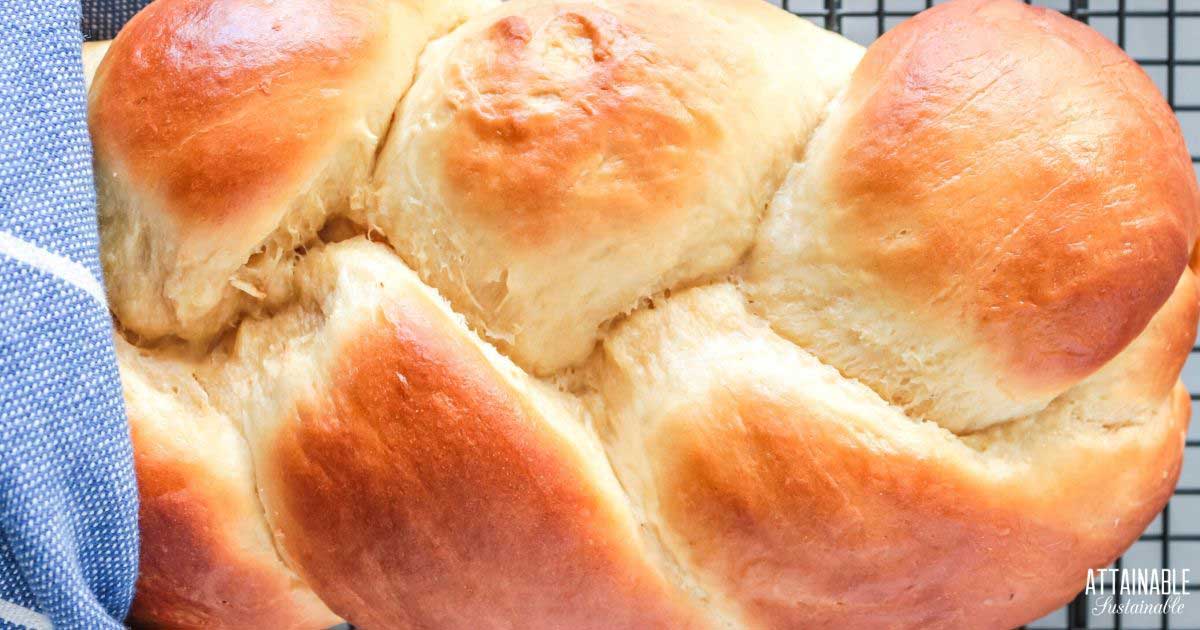
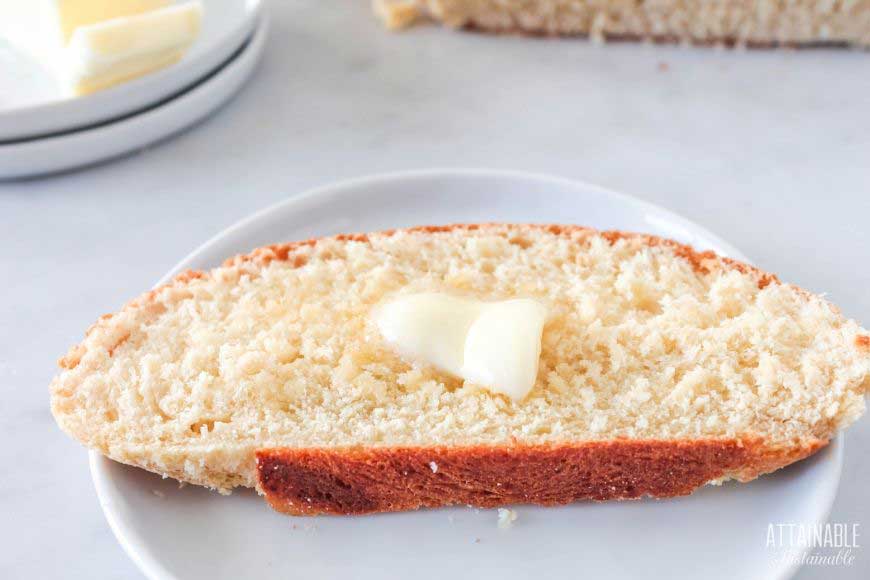
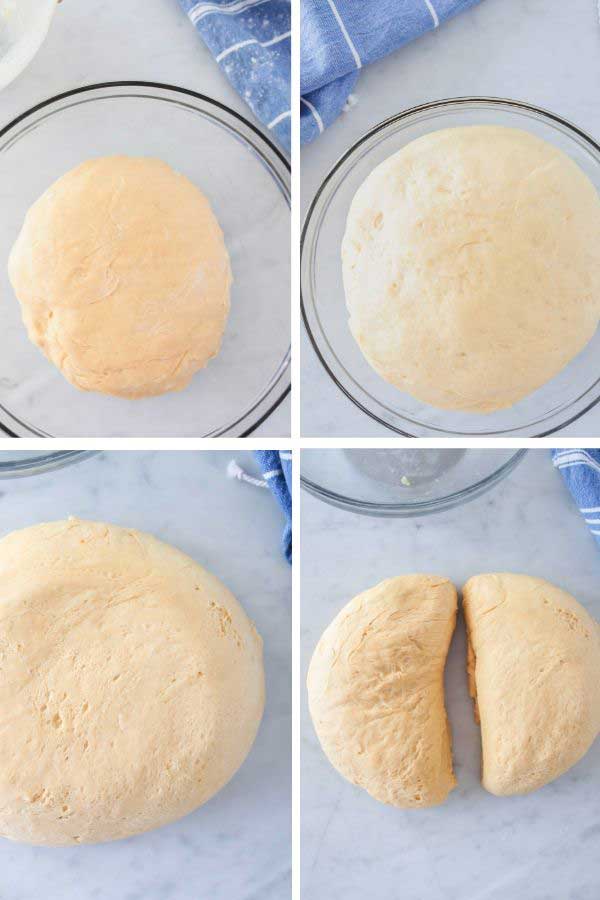
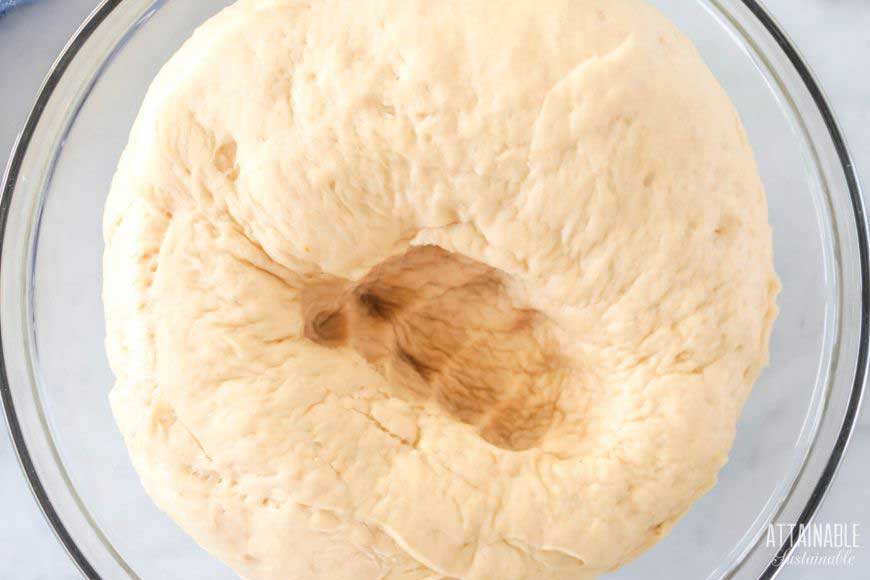
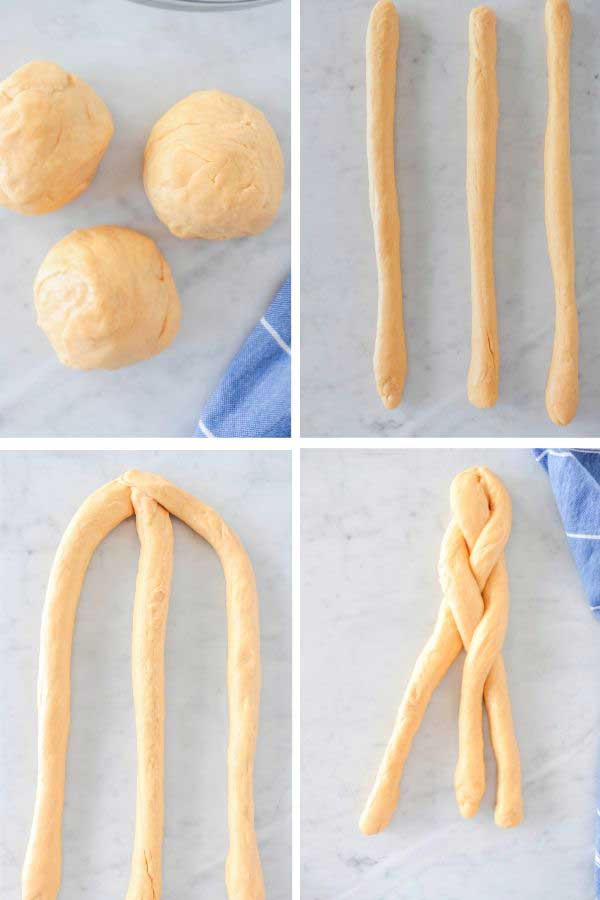
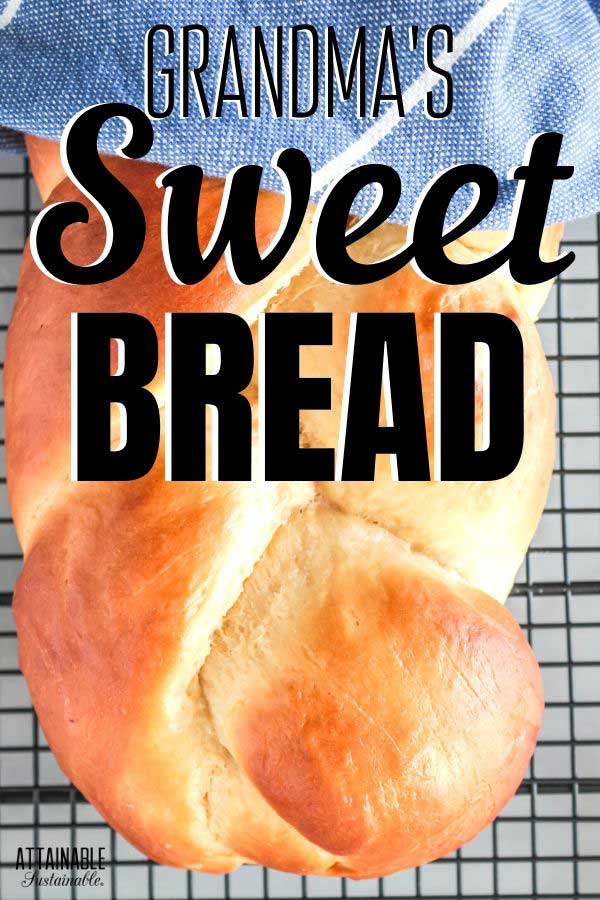
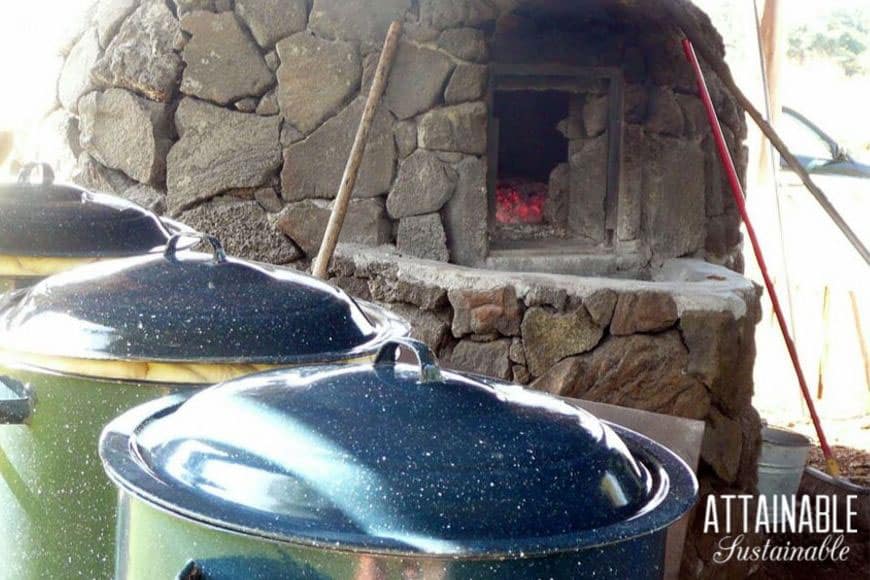
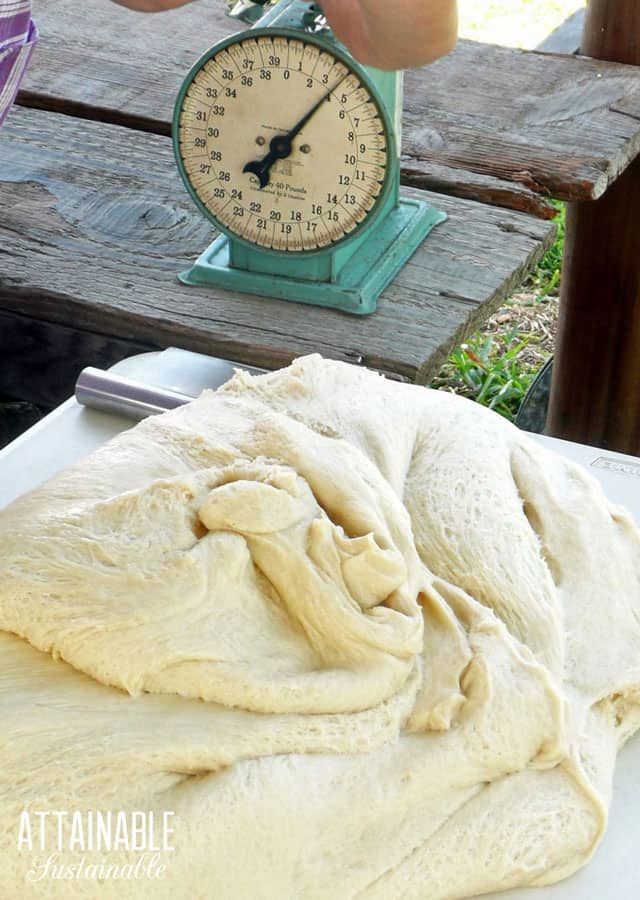
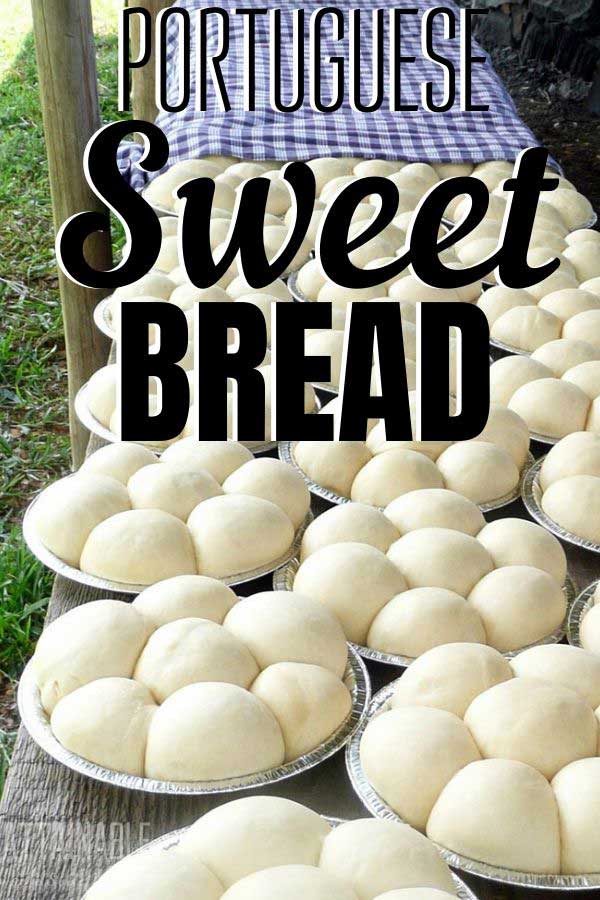
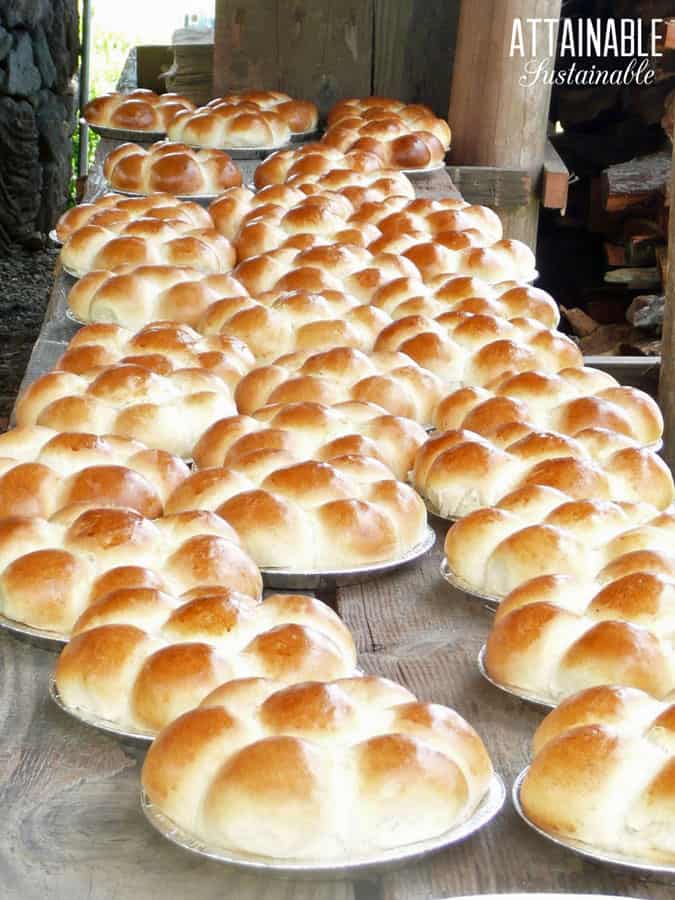





Good recipe but I found the flavor too bland. Next time, for my elderly tastebuds, I will add another teaspoon of salt, a teaspoon of vanilla extract and maybe a few more tablespoons of sugar.
Let us know if you’re happier with it like that!
This is exciting. I have yet to find a gluten free/ dairy free recipe but I am a pretty decent baker. I want to make this for Easter this weekend and try my hand at making it gluten free. My husband’s family is from the azores and apparently my great great great great great(more or less lol) was the queen of Portugal so I feel I need to master it. With that being said, almond milk, a little more butter and a gluten-free bread flour with xanthum gum should do the trick? Also, most Portuguese people where I live, add a bit of lemon too it. Might be a local thing but I love that light little tartness it adds. It really elevates the bread flavor and definitely helps with gluten-free just like apple chosen vinegar would. What do you think? Can I convert this to gf/df?
Sorry, I’m *just seeing this. Did you try it? Success? (And also, *royalty in the house!? How cool is that? My family is also from the Azores.)
I made this sweet bread today and it’s so nice and light and delicious.
I would like to make more but my son likes it a little sweeter. What can I add to make it a little more sweeter without changing the texture.
Joyce
Adding a few more tablespoons of sugar shouldn’t impact the texture, really.
My parents are from Portugal, this bread is one of my favorite indulgences, my mother made it for special occasions. However, I never knew the connection between portuguese sweet bread and hawai’n sweet bread. So interesting, Thank you!
This is perfect! Made a batch yesterday, so easy and delicious. I actually saved some dough in the fridge overnight to have fresh bread in the morning and it was so good! Thank you
Oh good, love to hear that! You’re welcome 🙂
I just made this recipe and it’s amazing. It brought back so many memories of my grandmother. She was born and raised on Terceira island, Portugal. This recipe tastes and smells just like my grandmothers did. Im so happy and so is my belly. I wish I could post a picture of how beautiful the bread turned out.
I’m so glad you made this and loved it! 🙂
I split the dough in two and baked in sandwich loaf pans, made two beautiful bouncy loaves of bread. Had to wait two hours on the final rise because my home a bit chilly, but it’s well worth it ♡
Yum! 🙂
Hi can I use Spelt flour?
I haven’t tested that in this recipe.
In my family, we used to make this bread at Eastertime. I thought I would compare it with my great-grandmother’s recipe, that came to the U.S. with her in the early 1900s, from the Azores. Low and behold, we have the exact same recipe! The only difference is that my mother wrote 2 packages of yeast, bringing it “up to date” with what we have in the stores today, I imagine. Anyway, I’m very surprised that it is the same. That would attest to it’s authenticity! I’ve never made rolls or a braid with the dough, so I’m going to give that a try this year. Thanks and Happy Easter!
That’s so cool! Thanks for sharing and Happy Easter!
Hi! I would love to bake this bread this weekend but I have some questions. First how long and what speed do you recommend when using a stand mixer. Secondly, when incorporating whole eggs that bake with bread, how do you do it? Sadly my grandmother often spoke of this bread but never baked it for us. The internet has allowed me to explore many of the traditional meals she has spoken of. Thank you for sharing!
Usually, with a dough hook on a stand mixer, they recommend a low speed. If you’re not sure I’d check with the brand of mixer you have. You could either beat the eggs in by hand or use your beater attachment on your mixer.
Do you hard boil the eggs before baking and inserting in an Easter braid?
My mom always boiled the eggs prior to braiding them into the bread; I’ve seen others put them in raw, but I worry that they might burst in the oven.
Hoping to make this recipe later today for the first time. Can you tell approx how many rolls this recipe will make?
Sorry; late response here, but likely 14-16, depending on how you roll them.
I made this recipe last night I braided the bread but my rolls were a little too fat so it didn’t come out as pretty as yours! I sampled it before I gave it away and it was very tasty. I’m going to start another batch right now. It does remind me a lot of the Challas I’ve made, but it’s not as dense and has become my favorite. my father
Family are Portuguese and Russian and they were born and raised in the Hawaiian islands. So this fits all those notes beautifully for some traditional breads to share with my grandchildren.
So glad it tasted good and you can share this bread with those you love!
The Portuguese bread baked at Easter with eggs is a time honored one in Sicilian homes. Of course we don’t refer to it as Portuguese! We do not cook the eggs first but color them and set them in the braided ring where they will bake as the bread bakes
Sounds lovely!
I am gonna make it next Sunday but first can you explain
1 cup milk, scalded and still hot
Scald the milk in a saucepan, until it bubbles around the edges. Then use it while it’s still hot. I hope that helps!
would an egg wash work instead of milk?
I haven’t tried that so couldn’t say for sure, that step is optional so you could go without or try the egg wash and see how it does!
What should the internal temp. be for Grandmother’s Port. bread. My bread was quite dark and had not reached the 190 mark which is for most breads.
I think you’d want this bread the same temp, perhaps your oven is running a little bit hot?
If bread browns too quickly, you can tent foil over it so it can complete cooking w/o over browning it.
I ended up using about two extra cups of flour just to get it to what I felt was a good bread consistency. I’m hoping i didn’t overwork it though as I just put it in to prove.
I hope it turns out for you!
Wow this looks so good! Any idea if this would work out using a bread machine on dough setting just to get the dough made, before doing second rise in a pan?
I haven’t tried that so can’t tell you for sure how it would turn out, but I think using the dough setting alone should be much like using a dough hook on a mixer. If you try it, let us know how it works!
This is traditional Challah bread that jews make for shabbot (the sabath). It starts Friday night and ends Saturday night. Traditionally two loaves are baked as Orthodox Jews won’t use their oven on the Sabbath. Perhaps their is some long lost Jewish ancestry in your family. Many Jewish families were forced into hiding but some traditions were hard to kill. Happy to see a delicious recipe being shared.
Thank you for this history and tradition – I’m happy you appreciate this recipe too!
I’m not trying to but in but I am Portuguese, born in faial acores, I gre up eating this , my mother , grandmother, great grandmothers on both sides made this bread and we are not Jewish … every azorean island makes this bread .. we are not Jewish . This is called masa suvada and it’s delicious and it’s a part of our culture and traditions and exists in every Portuguese household in the azores and that’s probably also true for the main land ..
Trying this for the 1st time today. If I’m using the mixer to do the kneading, do I add the full 6-7 cups of flour to the dough mixture or just the 5 cups? Directions say if doing it by hand, add the 5 cups and use the remain in the kneading process.
I would start with the 5 cups of flour, and then add in more as needed based on the stickiness as the dough hook kneads it for you. Good luck! 🙂
I made rolls and the instant my husband tried one he said “make sure to keep this recipe!” We didn’t eat them soon enough so they got stale and incredibly dense. To offset this, I heated one in the microwave and poured cream over it. Delicious! I plan to make them for Thanksgiving. Is there a way I can keep them soft for a day?
So glad you love them! While nothing beats fresh-out-of-the-oven softness, you could try storing them in an air-tight container, or putting a towel over them while they’re still warm.
Looks like a great family recipe.
I found Terry’s comment rude. Thank You for sharing with us from Your Grandmother! I do love family recipes as their love lives on in their food. I can not wait to try this bread! Again Thank You for sharing!
Thank you, Allison. I hope you enjoy the bread.
Hi, recipe very easy to follow! And delicious. Just wondering, how to store it? Ziplock? Plastic container?
Thanks
My mom always wrapped hers in a towel if we’d eat it in a couple of days. Longer storage, I’d use a plastic container. (I try to avoid ziplocks!)
I usually freeze the loaf that I’m not eating yet. Cut in half and freeze both halves. It’s so fresh when it thaws. I also used to cut a thin slice if it was a few days old and toast it. Turned out great and tasty.
Great tips, thanks for sharing! 🙂
Fantastic recipe- thank you! I used bread flour, regular granulated sugar and replaced the milk with the same amount of warm water plus a heaping 1/4 cup of King Arthur Bakers Special Dry Milk powder added to the dry ingredients. The texture was beautiful and the taste delicious. I will be using this recipe for my round Easter braids this year with a colored egg in the center as it is very similar to Italian Easter Bread recipes.
Sounds amazing. Thanks for sharing!
Can I use all purpose flour I dont have organic one .No time to go to the store.
Yes
Often when I see a recipe claiming to be “authentic (fill in the blank) …” I just roll my eyes. Rarely do they seem to be what they claim. However, this Easter bread recipe gets 5 stars from me. It’s virtually identical to our family recipe that came over from Portugal with my grandmother around 1900. While I’m sure every family had something that made the recipe unique to their household, I am certain this recipe will yield that delicious, fragrant bread that filled our kitchen every spring.
It’s identical to my great-grandmother’s recipe, too! They came to California in the early 1900s, also. Maybe we’re related:)
Love it! 🙂
I made your Portuguese sweet bread recipe it turned out delicious, sweet and soft thank you
Patty
I’m so glad!!
Can I use saf red instant yeast?
I haven’t tried this. If you do, let us know!
Hi there,
I would love to try your recipe, do you think I can I use white sugar instead?
That’s all I have and done covid, I rarely go to the grocery store
Thanks
Yes, of course!
I love homemade breads and baked goods. I am so looking forward to making this Portuguese sweet bread and sharing it with my family. PS… Please share more of your recipes!!!
Can you use regular sugar instead of the cane sugar
Yes.
Can you use regular sugar
yes
For some reason the bottom burned? I put the bread on Sheetal with parchment paper. Could the parchment paper cause it to burn??
I don’t know what Sheetal is, but issues like this might be due to variations in oven accuracy.
Excellent. Braided the dough and it was excellent!
Yay!!
I would love to make the rolls for gifts. About how many balls of dough go into each tin foil pan. Can you tell me about how much each ball weighs? They look so beautiful in the pans.
Thanks so much for your time.
Weight, I’m honestly not sure! But you should be able to fit seven in a round pan.
I tried to make this and the dogs did not rise. What could I be doing wrong!
Is your yeast fresh? Is your house warm? Those are the common culprits!
I used my mixer with the dough hook attachment for ten minutes. The dough did not rise much after two hours. Taste was good but texture was dense. Maybe the 1/4 c of water was too little as the yeast made it very gummy not as airy as other recipes I have tried. I will try again with more warm liquid to dissolve the yeast and hand kneading.
This recipe does make a denser bread than some of the store bought sweet breads.
Same issue here and I make a lot of bread.
Yes, me too! And I have been baking bread with my mother and all the old Portuguese ladies at the hall for years. Thought I’d try a new recipe and I went through two batches, first with active dry yeast and the next with rapid rise. Both brand new. The first didn’t rise at all, both made Uber dense dry bread. Something is off with the recipe.
I’m not sure what’s happening in your kitchen, but this recipe has 369 reviews, averaging 4.4 stars. It’s working for an awful lot of people! If you figure it out, I’d love to hear.
Thank you for the recipe, looks good, I love baking would lovew to have an email for a person on the broucher to assist, its yummy indeed, i will try it at home and surprise my elders over this xmas. Thank you.
This is the jewish bread for Saturday or shabbat, called halla. Braided in various forms, sweet, some more some less..we bake it weekly.
Loved this recipe. I made roles and a braid for a family get together and I couldn’t believe how fast they went. I’m half Portuguese and like to explore recipes from that side of the family, my moms. But I changed the recipe slightly. One thing: instead of 1 cup sugar, I used 3/4. I kneaded by hand and barely used 5 cups of flour (or I miscounted!). They were perfect for my family and are now a favorite. Thanks!
Glad you liked it!
Thank you for the recipe! My Mom use to put a little lemon extract and of course hard boiled eggs. I remember snicking a little raw dough as a child. I will try it soon!
You’re welcome! I love this memory, enjoy!
I’m hopeing to try this today with Father’s Day dinner; I’m a true amateur baker, coo
This can’t be near as good as the recipe that I have from an actual Portuguese grandmother! Her granddaughters were with her when she made a batch and they documented everything that she did. And measured what she was using. This doesn’t have Near enough sugar or butter and doesn’t take near as long as what I used to make. I would get up at 4:00 AM to start a batch in a medium size plastic wash pan and wouldn’t finish until around 10:00 PM at night! It was a chore but it was Great and especially sliced and toasted! My 1st wife’s Grandmother was from Portugal and had been making this since she was a child! Grandma Gertrude Pine (Americanized.)
Well, it sounds like you should stick with your recipe, rather than trying my Grandma’s!
HA HA HA, I WOULD NEVER TELL YOU THAT AT ALL. SORRY FOR HIM, OR HER
BAKE ON-BAKE ON BAKE ON THIS DAY OUR DAILLY BREAD.
LOVE YOUR RECIPE.
That’s a bit rude. Did you try this? Maybe it is just as good only easier. Most people would never want to spend that much time!
I visited my cousins in Porto, Portugal, last October. I’m half Portuguese. All my relatives are “authentic” Portuguese. I was interested in family recipes, especially for Natas. What I discovered is that recipes passed down, even within extended family, tend to differ slightly in ingredient amounts and methods. All are Portuguese. Each time the recipe is passed on, the baker includes changes that gave them the very best results. My “family” recipe for Portuguese sweet rolls is every bit as “authentic” as the one your family filmed your grandmother making. Your “near as good as” comment is purely subjective. Every family is different, but I applaud your love and respect for your grandmothers recipe. I’m pretty sure the one I have from my family is “as good as.”
This is so accurate! Thanks for chiming in. I tried natas when I was in Lisbon with my mom a number of years ago. I’ve yet to try to make them myself; I feel like knowing how would be dangerous. 😉
Comments like this are from very unhappy people.
Please people, if something irritates you about a recipe then move on without berating hard work done by others.
Everything made in recipes of all kinds are done differently and that is what makes each persons recipe unique and all great!
Spread love and happiness and we all appreciate that!
Thank you for sharing and all the hard work you put into sharing your recipes~
Blessings to all <3
This recipe looks like it makes 2 pans of rolls. I would like to half it. Would you reccommend using 1 or 2 eggs?
I suppose I’d use 2 medium sized eggs.
I am looking forward to trying this recipe. Do you think it could be make with non-dairy milk? We usually have oat milk on hand?
I haven’t *tried it, but I would. I think it would work fine.
I only have instant yeast, do I still activate it in the water?
You should not have to proof this in water, but note that I’ve not tried this replacement.
Can this be made into loafs instead. This will be my first ever attempt to make bread.
Yes, absolutely. Form loaves and place on baking sheets.
My family is from Hawaii also. My mom made Portuguese sweet bread all the time. But her recipe has 3 medium potatoes peeled,sliced and mashed. It gives it a heavier texture. Love the smell when it it baking.
Ah, I love hearing how different bakers bake!
Can this be refrigerated and form the rolls the next day thanks
I haven’t tried that but I think it would be ok, give it a try and see how it does. 🙂
Can you recommend sources to buy “real-kine” P. sweetbread? I would love to give some to an older Portuguese couple who are caregivers and homebound. King’s and Ani’s are at all the grocery stores but I’d like to find a brand that is like back home Kauai bread! Thanks!
The favorite here is from Punalu‘u Bake Shop and I just looked — they do online sales! https://www.bakeshophawaii.com/products/punaluu-box
Hell
o. I have an indoor grill. Do you think I could make bread on it? Will try your sweet bread over weekend [email protected] thanks.
tr
I’ve only done pizza dough and tortillas on a stovetop grill.
Love the rolls idea. Overall, I like this recipe very much. Simple and straightforward. Came out even better than the one at King Arthur Flour (which is a great site for baking.)
Glad to hear it!
I plan on making this bread real soon I am Portuguese and have been to Portugal. My Mother was born and raised in Honolulu so we have always eaten for holidays this bread! Thanks so much for sharing your recipe❤️
I hope you love it!
I am from Honolulu, and Portuguese sweet bread brings back so many memories. I was raised in California and now live in Pioneer, CA which I dearly love. My recipe is just like yours, except I use one block of butter. I made some this Easter and shared it with my family. I am 78 years young and love to make sweet bread as it is healing to my soul. I always make the sign of the cross over my rising dough, and yes, I too am Portuguese.
go
Traditions like this are just so special!
Mine was a little dry. What can I do to over it?
I’m not sure I understand the question, but try reducing the bake time? Your oven might be calibrated differently than mine.
Yes, reading many posting how many different traditional ways of making our loved sweetbread is great! To me what ever method is used to make it I love it! Thanks for sharing your recipe.
You’re welcome! 🙂
Can this be refrigerated and baked later? Or frozen and baked later
I’ve not tried it. That said, I *have refrigerated yeast dough overnight. If you want to try it, I’d pop it in the fridge once it’s made, then pull it out and let it rise when you take it out.
Texture is different. Hawaiian sweet bread is not really authentic Portuguese Sweet Bread.
The texture IS different.
I’ll definitely make this again.
My ohana loved this recipe! I made the rolls…it was heavenly! The first pan of rolls rose perfectly but my second portion didn’t rise as much. Did I take too long to roll into balls or did I miss a step? It didn’t rise as much but it still tasted ono!
It could simply be the delay between batches, as the yeast could have “spent” itself before baking. If it was tasty, it sounds like you didn’t do anything wrong!
I didn’t get the 2 extra cups of flour but maybe that was just for dusting purposes and it didn’t tell how long to knead the dough if using a mixer with hook. Also the 1st time it didn’t turn out so the second time I proofed the yeast with sugar like it says on some sites. It worked out better the second time.
Using a stand mixer usually halves the kneading time
That looks like so much fun. I would have loved to have seen that wood fired oven in action. This recipe reminds me of a bread recipe of my childhood that they called “Sunday buns”, the idea being that you mix them before church and pop them in the oven while the potatoes or veggies are cooking for Sunday dinner. I didn’t have a recipe, for them but now I do. (thanks). I’m going to make these on Sunday for my dinner guests. Soup and buns is on the menu.